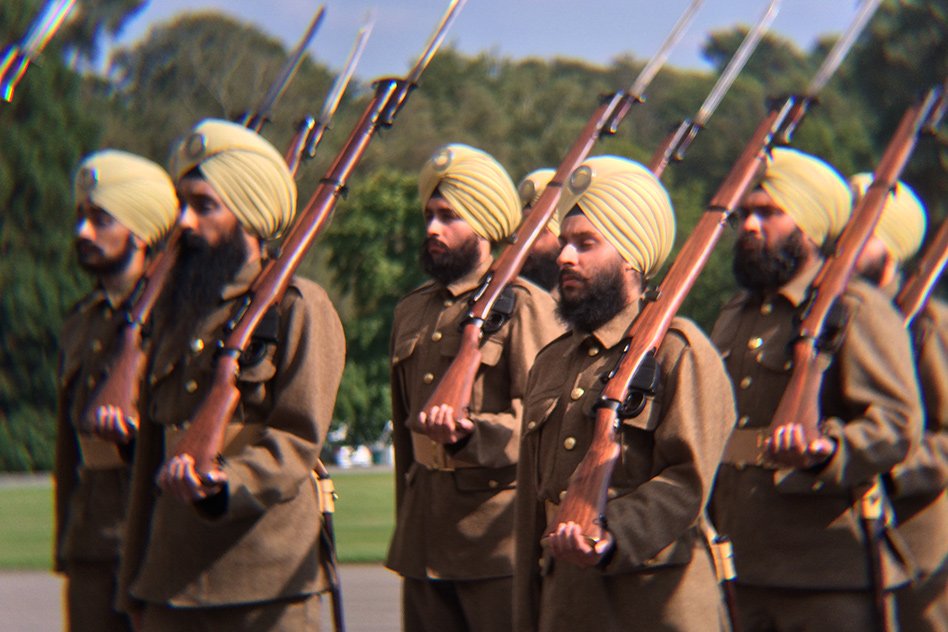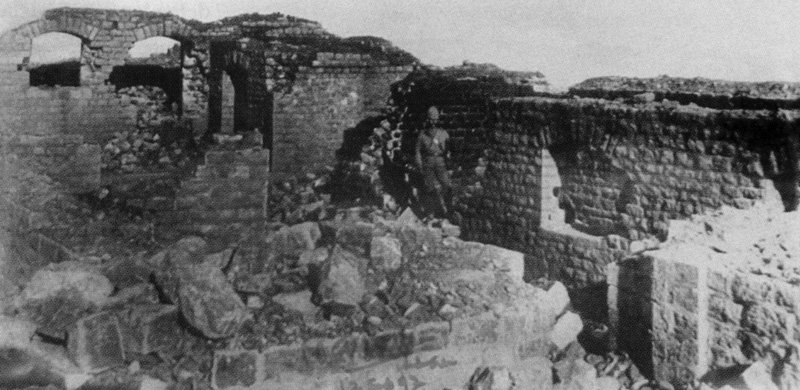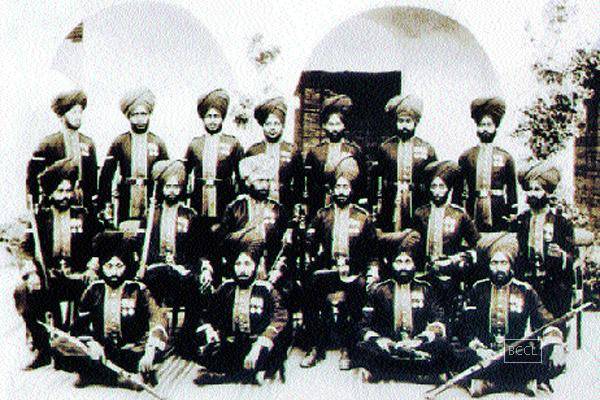
The Battle Of Saragarhi: When 21 Valiant Indian Soldiers fought 10,000 Invaders
8 Feb 2016 7:27 AM GMT
Editor : Quleen Kaur Bijral Bijral
Columnist, The Logical Indian
The history of India has been one of countless incursions by Afghans into Hindustan and finally this came to a stop.
- J. Singh-Sohal, Author of “Saragarhi: The Forgotten Battle”
It is thrilling to watch the movie 300, where King Leonidas and his army of 30 brave Spartans battled the Persian god-king Xerxes and his army of 300,000. It but comes as a surprise that a battle of such a magnitude had also occurred in our country which however is unknown to most of us. Recognized as the Battle of Saragarhi, it is not only a moment of pride for India but also a sad truth that this tale of our countrymen’s sacrifice is hardly recorded in the annals of Indian history.
Saragarhi was a small village where a defence post was established in the North-West Frontier Province of the erstwhile British India. The outpost served as a signalling post to communicate between two British forts and to alert against any surprise attack from the tribal warriors of Central Asia. On 12th September 1897, in this very location, 21 soldiers of the 36th Sikh Regiment fought against the ten thousand Pathans and Afghan tribesmen, and despite being outnumbered they chose to hold their ground and thwart the invasion of India. As significant as this historical truth is, the general masses are still unaware of the sacrifice made by the Indian soldiers at the Battle of Saragarhi. This historical fact is one such event among the many events in the Indian history that lack awareness among the public. It is high time such events are remembered lest we forget the sheer glory of our Indian men and women. It is a matter of shame and a grave loss for our future but most of all it is an affront to the painstaking efforts of our countrymen.

Chain of Events in the Battle
The battle began on the morning of 12 September 1897, when Gurmukh Singh of the 36th Sikh Regiment noticed an enemy horde of 10,000 and 20,000 riflemen marching towards the outpost. The commanding officer- Ishar Singh grouped together his men to decide whether to surrender, abandon their post or fight. All chose to fight as a delay tactic so that in the meantime the neighbouring forts would be in a position to prepare themselves.
The battle lasted 6 hours, from 9am to 3pm and during this ordeal, 21 Sikh soldiers held out against the massive horde of riflemen and heavy artillery. The enemy broke in through a meekly defended section of the outpost and set the fort to fire. The Sikhs retreated to make a stand from inside the fort. But Havildar Singh stayed put to distract the enemy and buy time for his men to retreat. It was when the inside section of the forts was breached that the outnumbered Sikhs made an epic last-stand till their last breath.
The enemy shifted their attack to the nearby forts but as the latter had been alerted and had time to brace themselves, the attack was not successful. The enemy at the end of the day lost despite its colossal numbers and weapons.
Debunking the Myths and Knowing the Truth
There have been many erroneous myths connected to the Battle of Saragarhi which compromise its historic legitimacy. In order to rectify and apprehend these misinterpretations, I contacted J. Singh-Sohal who as a writer and filmmaker has meticulously researched the factual records of battle of Saragarhi. Mr. J. Singh Sohal is a British writer and independent filmmaker. He created and launched the UK’s first National WW1 Sikh Memorial in November 2015. He also edits the souvenir journal of the memorial titled “The Sikh Chronicles”. An ITV-trained reporter, Jay’s media career has included output producing at Sky News, as a specialist researcher for the BBC and presenting shows and documentaries for various other channels. The major focus of Mr. Sohal has been to promote and highlight Anglo-Sikh history with notable mentions as the landmark “Turbanology: Guide to Sikh Identity” which imparts meticulous info on the evolution of the turban and its relevance for Sikhs; besides this, he is also an author of the distinguished and well-received book “Saragarhi: The Forgotten Battle“.
In reaching out to Mr. Sohal, the objective was to unearth the authentic version of the battle. And, also highlight the relevance of the battle in Indian history, its contemporary engagement with the masses and to usher it into the mainstream/official history. The questions raised in the interview and the articulate responses delivered by Mr. Sohal will take the reader into the heart of the matter.
How is the Battle of Saragarhi a defining moment in the history of India?
To understand why this is significant we have to look at Panjab post annexation in 1847 – Sikh soldiers who had fought against the British were now mobilised into a frontier force and sent to the border with Afghanistan to protect India from incursion. The history of India has been one of countless incursions by Afghans into Hindustan and finally this came to a stop.
 Image Source: timesofindia
Image Source: timesofindia
What are the ways this artefact of history has been promoted? And, as a writer, how do you work at promoting this battle?
The British recognised the bravery of the 21 at Saragarhi and did a lot to promote it – memorial Gurdwaras were built just a few years after the battle in Amritsar and Ferozepur to remind people of the bravery – and a battle honour day awarded to the 36th Sikh Regiment. The descendant of that regiment – 4 Sikh – continues to mark the occasion and memory of Saragarhi but the factual narrative of the battle has been long outside of military circles. On my part, I have conducted authoritative research into Saragarhi, writing and making films about it so people realise why it is a battle worth commemorating. These efforts have led to the British now marking Saragarhi day every year in Britain – for the first time since independence.
There had been a claim that UNESCO included this battle among the five greatest battles of the world? Is this authentic?
Sadly, the battle has attracted many myths, possibly for political reasons, and the UNESCO claim is one of them. There is no truth in this, as I discovered when writing “Saragarhi: The Forgotten Battle” and this only upsets the truth of what the battle was and why it is significant. We do not need such lies to propagate the greatness of the heroism of our forebears – only by truthfully telling this story can we do it justice.
Why in your opinion has this battle not reached the recognition as cherished by the Spartan war?
Popular culture has a lot to do with why the story of the Spartans is so well known – it is my hope that through factual and accurate portrayal of Saragarhi, it can capture the minds of people worldwide in much of the same way.
The Need of the Hour: Time to Record the Truth
Glorious and inspiring has been the history of India. There are but times when Indian historiography fails to highlight certain significant historical facts which serve as our nation’s pride. This neglect has left the mainstream unaware of many unacknowledged and unsung examples of our country’s culture, grit and legacy. It is our nation’s irreparable loss to forget the great events of our history and it only gets worse if the truth of history is deemed as unimportant. Due to this, the future generations will be forced to read the half-truths and lopsided tales.
Matters which concern the making of history have always been a controversial subject. Due to its politicization, history has often been abused by those at the helm to promote their interests over the general masses. Undoubtedly, as this unethical practice goes unchecked, the stories of the people at the margins are difficult to get to and in terminal cases they might even cease to exist. History when serves as a life-force of a community’s existence, if it is rendered null and void, one can imagine the consequent grave repercussions. Such malicious attempts to mar the validity of historical documents have awakened many a writers and activists to rewrite and thereby rectify the ‘lies’ perpetrated in the name of history. The endevour of these writers and historians is to regain the truth of history and only by acknowledging their work, listening to them and promoting their cause, can one approach the Truth of History. Otherwise one would be left with a document that is filled with false interpolations, wrong data, and hijacked details meant to flog the truth from one page to another. And at the end of the day, we would feel detached of our culture, while those who give their lives for the security of our future would be long forgotten.
In our country there are scores of such episodes which despite their indispensable significance are still trailing in the dark. The question we need to ask is – Why is there a disengagement of these records from official history? History should follow an encompassing model engendering inclusivity than exclusivity. Once that is ensured, the records which often miss the limelight would be acknowledged to keep the memory of our country alive and authentic.
Let’s record history by inclusion than exclusion.
 All section
All section













